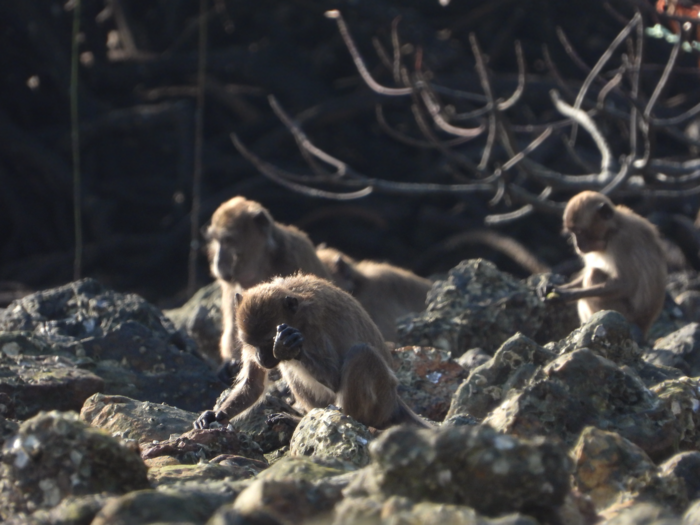Unexpected similarities between humans and monkeys in the early age were recently discovered upon getting ahold of new artifacts used by the animals for their food. These stone tools show an unexpected likeness to what the early humans used as instruments for their food, with researchers recently studying monkeys in Thailand to learn more of this new information.
It was initially theorized that humans came from monkeys through evolution, from the famous Charles Darwin, and this similarity helps more in learning our early days and how humans came to be.
Stone Tools Share Similarities on What Early Monkeys and Humans Used

Researchers at the Max Planck Institute for Evolutionary Anthropology have discovered an unexpected similarity between the tools used by ancient humans and those of modern-day monkeys. A new study published in the journal Science Advances, reveals that certain monkeys in Thailand have been observed using stones in a way that bears a striking resemblance to how early humans used tools.
According to lead author Tomas Proffitt, "The ability to intentionally make sharp stone flakes is seen as a crucial point in the evolution of hominins, and understanding how and when this occurred is a huge question that is typically investigated through the study of past artifacts and fossils."
Read Also : Bioengineered Monkeys Have Larger Brains With More Wrinkles; Experts Insert Human Genes Into Them!
Thailand's Monkeys Use the Same Stone Tools for their Food
The researchers regarded that these stone tools were used as hammers and anvils to break open nuts for food, something which long-tailed macaques in the Phang Nga National Park in Thailand also utilize now.
"The fact that these macaques use stone tools to process nuts is not surprising, as they also use tools to gain access to various shellfish as well. What is interesting is that in doing so, they accidentally produce a substantial archaeological record of their own that is partly indistinguishable from some hominin artifacts," he added (via EurekAlert).
Monkeys and their Similarities to Humans
The researchers found that the monkeys were using the stones in a manner similar to how early humans used tools. The monkeys were also seen using larger, heavier stones as anvils to hold the nuts in place while they were being cracked open.
Previous studies claim that there were also Capuchin monkeys that were discovered some 3,000 years ago to also use stone tools that are similar to what early humans used during their time.
Researchers also discovered how Macaques have been utilizing tools for their food and survival, a discipline seen in the wild since then. It only shows how these animals were the first to utilize their environment, something which early humans have either adopted or copied from them, to further help them in their lives.
This behavior is significant because it suggests that the cognitive abilities required for tool use may be more widespread among primates than previously thought. The researchers believe that this behavior may have evolved independently in different primate species, including humans and monkeys.
Related Article : Ancient Stone Tools in Brazil Were Made by Capuchin Monkeys, Not Humans - New Study

ⓒ 2025 TECHTIMES.com All rights reserved. Do not reproduce without permission.




